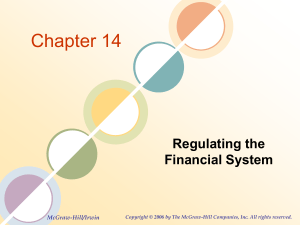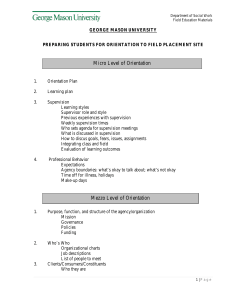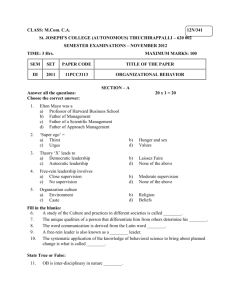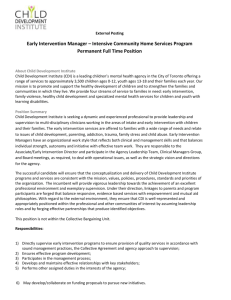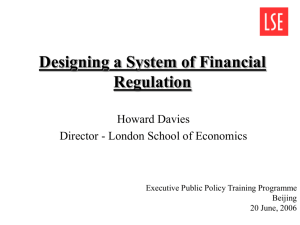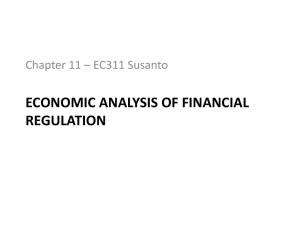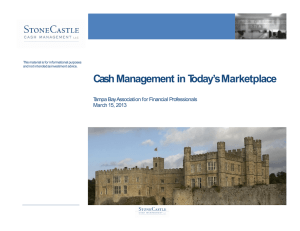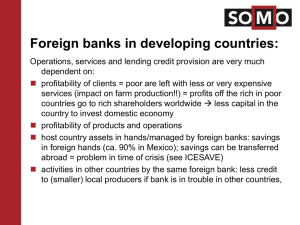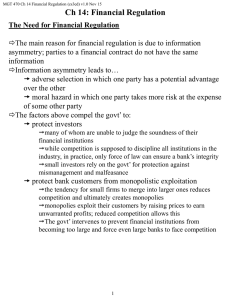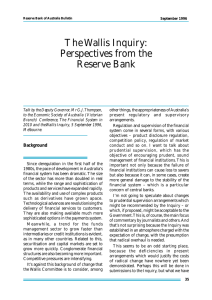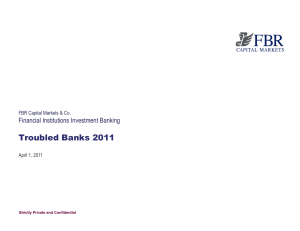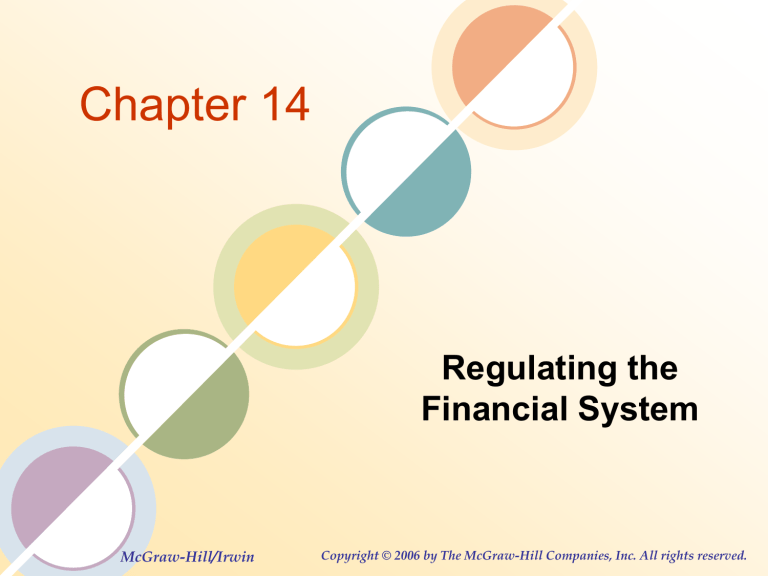
Chapter 14
Regulating the
Financial System
McGraw-Hill/Irwin
Copyright © 2006 by The McGraw-Hill Companies, Inc. All rights reserved.
14-2
14-3
The Sources and Consequences of
Runs, Panics, and Crises
•
•
•
•
Insolvent
Bank Run
Illiquid
Bank panic
14-4
The Government Safety Net
•
There are three reasons for the
government to get involved in the
financial system
•
•
•
to protect investors.
to protect bank customers from monopolistic
exploitation.
to ensure the stability of the financial system
14-5
The Government Safety Net
• the lender of last resort
• an institution would be capable of making
loans to prevent the failure of solvent banks,
and could provide liquidity in sufficient
quantities to prevent or end a financial panic
• deposit insurance
• a depositor will receive the full account
balance up to some maximum amount, even if
a bank fails
14-6
The Government Safety Net
• FDIC and Bank Failure
• the payoff method
• pays off all the bank’s depositors, then sells all the
bank’s assets in an attempt to recover the amount
paid out
• the purchase and assumption method
• FDIC finds a firm that is willing to take over the
failed bank. The FDIC sells the failed bank at a
negative price.
14-7
The Government Safety Net
14-8
The Government Safety Net
• Problems Created by the Government
Safety Net
• bankers take on more risk than they would
normally, since they get the benefits while the
government assumes the costs
• government’s too-big-to-fail policy limits the
extent of the market discipline depositors can
impose on banks
14-9
Regulation and Supervision of the
Financial System
14-10
Regulation and Supervision of the
Financial System
• Restrictions on Competition
• Bank mergers still require government
approval. Before granting it, officials must be
convinced on two points.
• First, the new bank must not constitute a monopoly
in any geographic region.
• Second, if a small community bank is to be taken
over by a large regional bank, the small bank’s
customers must be well served by the merger
14-11
Regulation and Supervision of the
Financial System
• Asset Holding Restrictions and Minimum Capital
Requirements
• asset holding restrictions
• U.S. banks cannot hold common stock
• generally prohibited from purchasing bonds that are below
investment grade
• any single private issuer cannot exceed 25 percent of their
capital
• Capital Requirements
• keep their ratio of capital to assets above some minimum
level
• hold capital in proportion to the risk level of their operations
14-12
Regulation and Supervision of the
Financial System
• Disclosure Requirements
• Banks are required to provide information,
both to their customers about the cost of their
products and to the financial markets about
their balance sheets.
14-13
Regulation and Supervision of the
Financial System
• Supervision and Examination
• The government enforces banking rules and
regulations through an elaborate oversight
process called supervision.
• Every depository institution that is insured by
the FDIC is examined at least once a year.
• CAMELS
• Capital adequacy, Asset quality, Management,
Earnings, Liquidity, and Sensitivity to risk
14-14
Chapter 14
End of Chapter
McGraw-Hill/Irwin
Copyright © 2006 by The McGraw-Hill Companies, Inc. All rights reserved.

